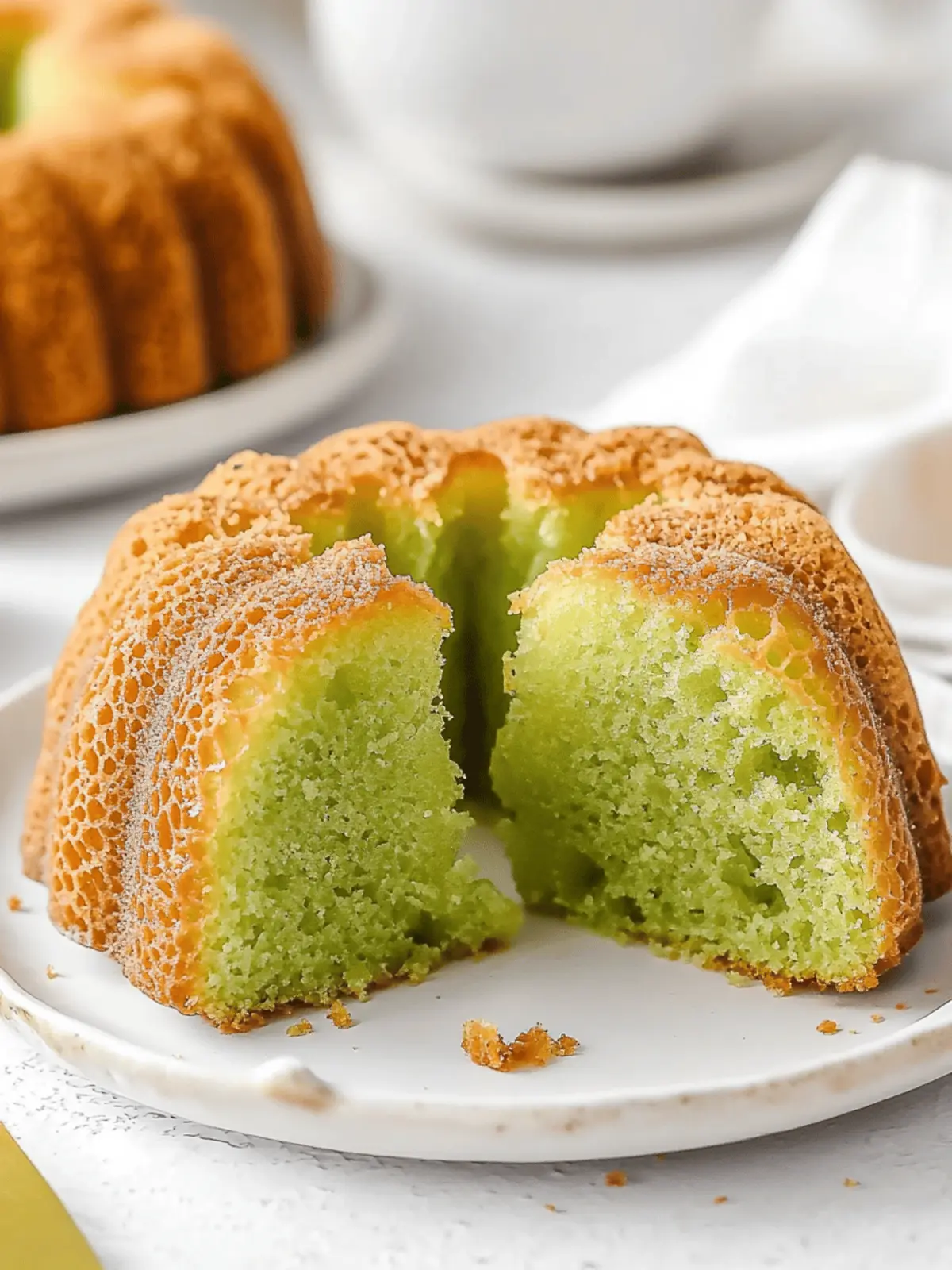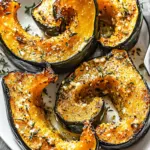There’s something truly enchanting about the vibrant colors and flavors of Banh Bo Nuong, the Vietnamese Honeycomb Cake. As the oven warms, the irresistible scent of pandan and coconut fills my kitchen, transporting me to the bustling streets of Vietnam. This traditional cake, with its iconic green and golden crust, is a delightful treat that perfectly balances chewy and airy textures.
Whether it’s for a special gathering or simply to indulge in a moment of sweetness with your afternoon tea, this cake brings joy and satisfaction with every bite. Plus, it’s naturally gluten-free, making it an excellent choice for everyone to enjoy. Join me as we dive into crafting this stunning dessert that is as delightful to the eyes as it is to the palate!
Why will you love this Vietnamese Honeycomb Cake?
Irresistible texture: The chewy, yet airy structure brings a unique experience that feels substantial and light at the same time.
Aromatic flavors: Infused with the floral notes of pandan and the rich creaminess of coconut, each slice bursts with taste.
Gluten-free delight: Made with tapioca and rice flour, this cake is perfect for those avoiding gluten while still enjoying something sweet.
Visually stunning: Its striking green and golden crust makes it a show-stopping dessert suitable for any occasion.
Quick to prepare: The straightforward recipe means you can have this delightful cake ready in no time, allowing you to enjoy a taste of Vietnam even on busy days.
Serve it alongside a cup of traditional Vietnamese tea for the ultimate experience!
Vietnamese Honeycomb Cake Ingredients
For the Batter
- Pandan Puree – This fragrant blend is prepared by mixing pandan leaves with water; you can substitute with pandan extract if needed.
- Coconut Milk – Adds a rich creaminess; opt for full-fat coconut milk for deeper flavor.
- Coconut Oil – Enhances moisture and imparts a lovely coconut flavor; neutral oils can be used as a substitute.
- Heavy Cream – Provides a rich texture; ensure it’s at room temperature for easy mixing.
- Pandan Extract – Boosts the aroma of the cake; optional if using fresh pandan.
- Granulated Sugar – Sweetens the cake, striking a balance with pandan’s earthy tones.
- Salt – Elevates the overall flavor profile of the cake.
- Large Eggs – Essential for structure and rise; make sure they are at room temperature.
- Tapioca Flour – Crucial for achieving that chewy texture; do not replace with glutinous rice flour.
- Rice Flour – Provides the necessary structure; avoid using regular wheat flour.
- Single-Acting Baking Powder – Vital for creating the honeycomb texture; do not substitute with double-acting baking powder.
Give yourself the treat of making this Vietnamese Honeycomb Cake—it’s truly a delightful experience you won’t want to miss!
How to Make Vietnamese Honeycomb Cake
-
Preheat the oven to 350°F (176°C) and warm your bundt pan for 15 minutes. This ensures an even bake and helps achieve that fabulous golden crust.
-
Prepare the pandan puree by blending water with cleaned pandan leaves. Strain to obtain 100 ml of the fragrant liquid, adjusting with coconut milk if necessary for richness.
-
Combine the wet ingredients in a large bowl: mix the pandan puree, coconut milk, heavy cream, pandan extract, sugar, and salt until everything is well blended and has a lovely aroma.
-
Strain the eggs over the mixture, adding them gently to minimize air bubbles—this helps create a smooth batter.
-
Sift the tapioca flour, rice flour, and baking powder together in another bowl. Once sifted, mix these dry ingredients with the wet mixture, ensuring everything is well incorporated.
-
Strain the combined batter again to remove any clumps—this step is essential for achieving that delightful texture.
-
Mix in the coconut oil gently, and let the batter rest for about 5 minutes to allow the flavors to meld beautifully.
-
Grease only the bottom of the bundt pan lightly; pour in the batter and bake for 45-50 minutes or until a toothpick inserted comes out clean. The top should look golden brown and inviting!
-
Cool the cake in the oven with the door cracked open for 15 minutes before transferring to a wire rack to cool completely—this helps prevent deflation.
Optional: Serve with fresh fruit for a delightful contrast against the cake’s textures.
Exact quantities are listed in the recipe card below.
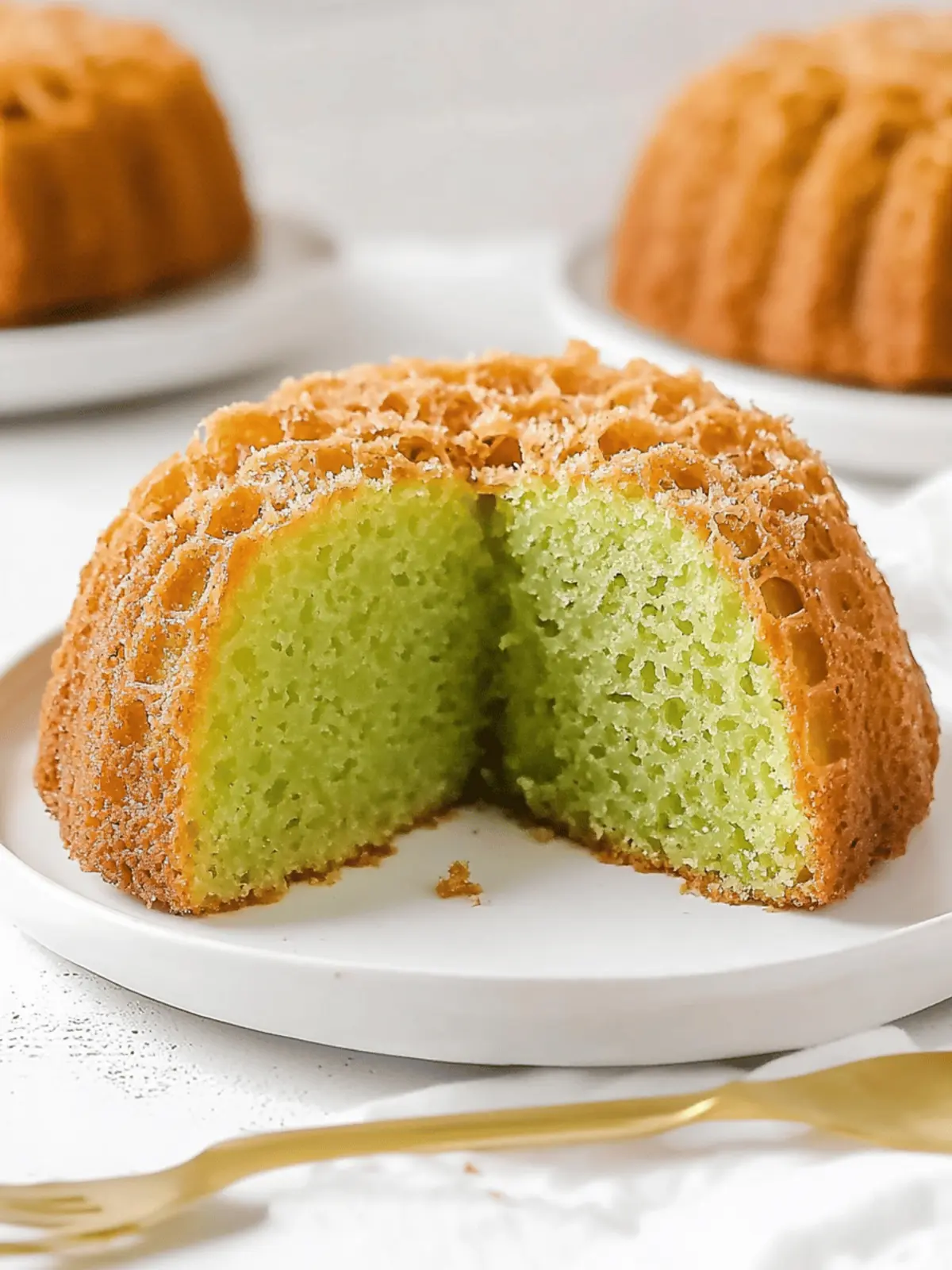
Storage Tips for Vietnamese Honeycomb Cake
Room Temperature: Store the cake wrapped in plastic wrap or in an airtight container for up to 24 hours to maintain its chewy texture.
Fridge: If you need to keep it longer, you can refrigerate it for up to 3 days. Ensure it’s well-wrapped to avoid drying out.
Freezer: For longer storage, freeze slices of Vietnamese Honeycomb Cake in an airtight container for up to 1 month. Thaw overnight in the fridge before serving.
Reheating: To enjoy warm, gently reheat slices in the microwave for 10-15 seconds or in the oven at low heat until warmed through.
Expert Tips for Vietnamese Honeycomb Cake
-
Use Quality Ingredients: Opt for fresh pandan leaves and full-fat coconut milk for the best flavor; substitutes may alter the cake’s final taste.
-
Room Temperature Eggs: Ensure your eggs are at room temperature; this helps the batter mix evenly and rise beautifully without disturbances.
-
Strain Your Batter: Straining both the eggs and the batter is crucial to avoid clumps, resulting in a smooth, airy Vietnamese Honeycomb Cake.
-
Single-Acting Baking Powder: Always use single-acting baking powder, which activates immediately. Double-acting is not suitable for achieving the desired texture.
-
Cool Upside Down: Allow your cake to cool upside down for 15 minutes to prevent deflation and keep that lovely honeycomb structure intact.
-
Minimal Greasing: Only grease the bottom of the pan lightly to ensure the cake rises properly; avoid greasing the sides, or it may not cling to rise.
What to Serve with Vietnamese Honeycomb Cake?
This delightful cake deserves a meal that matches its vibrant flavors and textures, creating the perfect dining experience for you and your loved ones.
-
Traditional Vietnamese Tea: Refreshing and aromatic, a cup of sweetened Vietnamese tea beautifully complements the cake’s chewy texture, enhancing the overall experience.
-
Fresh Tropical Fruit: Serve slices with mango or lychee for a juicy, sweet contrast that highlights the cake’s coconut and pandan flavors, rounding off the meal with freshness and vibrancy.
-
Coconut Ice Cream: The creaminess of coconut ice cream adds a soothing element, perfect for balancing the cake’s chewy texture while intensifying the delightful coconut flavor.
-
Sweetened Condensed Milk Drizzle: A drizzle of sweetened condensed milk over each slice elevates the experience, adding rich creaminess and a touch of sweetness that pairs wonderfully.
-
Savory Spring Rolls: Serve alongside fresh spring rolls filled with herbs, shrimp, and veggies for a perfect balance of flavors, enhancing the meal with contrasting textures that are equally delightful.
-
Mango Sticky Rice: The rich, sticky texture of this classic dessert made with coconut milk echoes the cake’s chewy nature while offering a deliciously sweet finish to your meal.
-
Fresh Mint and Lime Sprigs: Garnish with fresh mint and lime for a fragrant touch that brings brightness to the dessert, making each bite a burst of flavor.
Creating the perfect meal experience with your Vietnamese Honeycomb Cake is about balancing flavors and textures, ensuring each component plays a part in a delicious symphony!
Make Ahead Options
Preparing the Vietnamese Honeycomb Cake ahead of time is a fantastic way to save on meal prep during busy weeknights! You can mix the batter and refrigerate it for up to 24 hours before baking, which allows the flavors to meld beautifully. Just be sure to store it in an airtight container to maintain quality and prevent any drying out. When you’re ready to bake, simply grease your bundt pan lightly, pour in the chilled batter, and bake as directed. This method not only saves you time but also guarantees delicious results with minimal fuss, ensuring your cake retains its delightful chewiness and aroma!
Vietnamese Honeycomb Cake Variations
Embrace the delightful creativity of cooking and personalize your Vietnamese honeycomb cake with these exciting twists!
-
Extract Swap: Use almond extract instead of pandan extract for a fragrant almond twist that offers a unique flavor experience.
Enhancing this recipe with almond extract gives a delightful nuttiness, transporting your cake to new heights! -
Colorful Addition: Add natural food coloring to create a vibrant rainbow cake by dividing the batter and mixing in different colors.
Imagine cutting into a slice to discover cheerful layers—a fun surprise for family gatherings! -
Sweet Spices: Incorporate cinnamon or nutmeg to the batter for a hint of warm spice that rounds out the flavors beautifully.
These subtle spices will dance on your palate, adding warmth alongside the earthy pandan. -
Texture Contrast: Fold in toasted coconut flakes for an added crunchy texture that complements the cake’s chewiness perfectly.
The contrast of flavors and crunch is sure to please those who enjoy layers of texture in their desserts. -
Fruit Fusion: Mix in fresh mango or durian pieces for a fruity twist that complements the cake’s texture and enhances the tropical feel.
The freshness from the fruit will create an exciting mouthfeel, making each bite a refreshing delight! -
Coconut Cream Topping: Serve with a coconut whipped cream topping to amplify the coconut flavors and add a luscious creaminess.
It makes for a lovely contrast against the chewy cake, adding richness to your dessert experience! -
Savory Surprise: Add a pinch of sea salt or sprinkle of cheese on top before serving for an unexpected savory kick.
Just imagine the surprise of the flavor contrast—sweet and savory dance beautifully together! -
Maple Enhancements: Substitute sugar with maple syrup for a deeper, caramel-like sweetness that pairs wonderfully with coconut.
This alternative not only adds complexity but also a lovely hint of autumn to your cake.
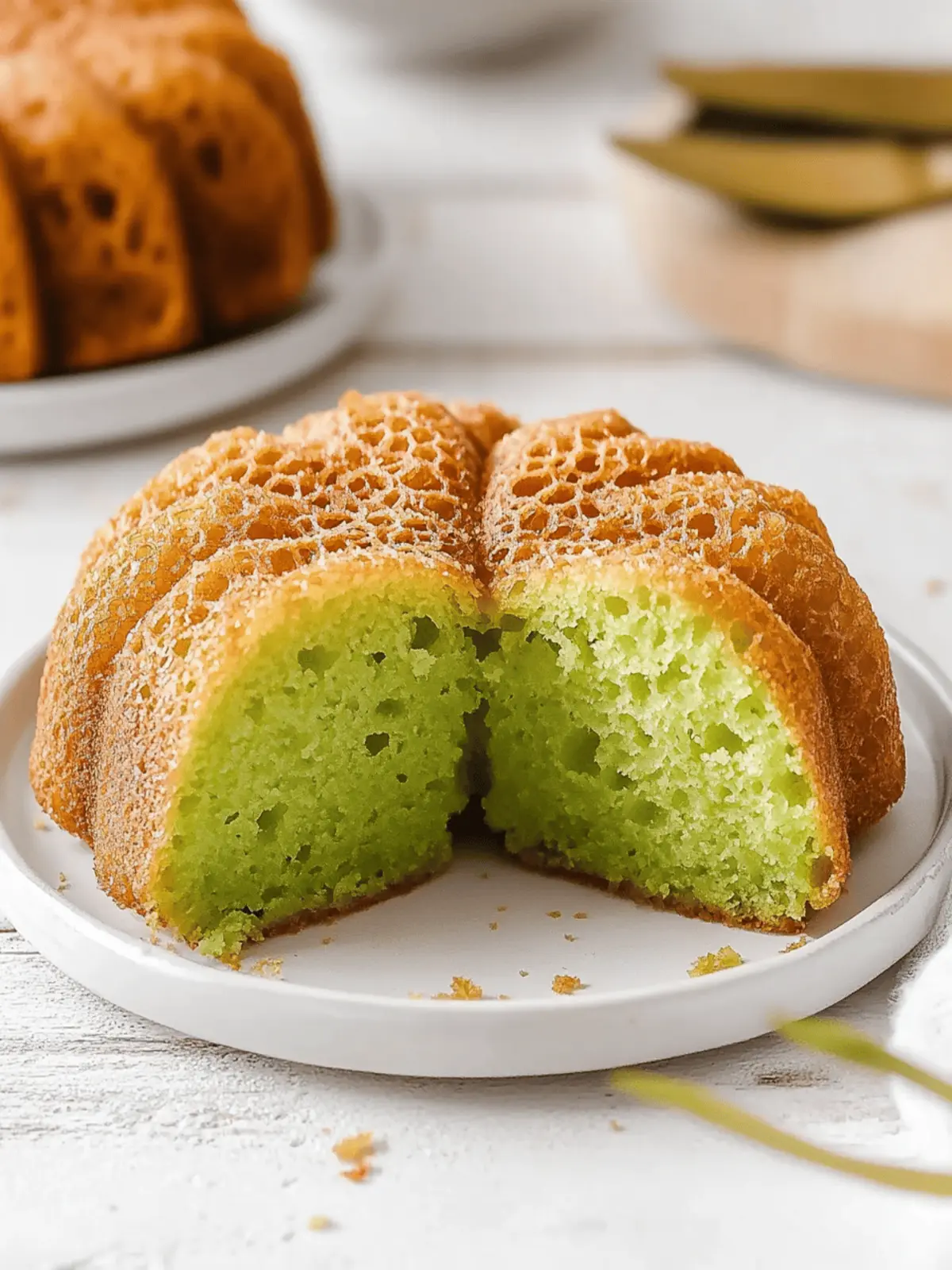
Vietnamese Honeycomb Cake Recipe FAQs
How do I select ripe pandan leaves for my puree?
Absolutely! When choosing pandan leaves, look for bright green leaves that are firm and vibrant. Avoid those that are yellowing or have dark spots, as they might be past their prime. Fresh leaves will yield a richer flavor, essential for your Vietnamese Honeycomb Cake.
What’s the best way to store leftover Banh Bo Nuong?
After savoring your delicious Vietnamese Honeycomb Cake, store any leftovers by wrapping them in plastic wrap or placing them in an airtight container. Keep it at room temperature and enjoy within 24 hours to maintain that delightful chewy texture. If you need to store it longer, refrigerate it for up to 3 days, ensuring it’s still well-covered to prevent drying.
Can I freeze Banh Bo Nuong, and how?
Yes, you can freeze your Vietnamese Honeycomb Cake! Slice the cake and wrap each piece in plastic wrap, then place them in an airtight container or freezer bag. Keep it in the freezer for up to 1 month. To serve, simply thaw the slices overnight in the fridge and gently reheat in the microwave or oven, bringing back that charming chewiness.
What should I do if my cake doesn’t rise properly?
If your Vietnamese Honeycomb Cake doesn’t rise as expected, check if you used single-acting baking powder, as it’s essential for the cake’s texture. Additionally, ensure your ingredients were properly combined—mixing wet and dry separately is key. Strain your batter well to avoid clumps, and always let your cake cool upside down for the best structure. A few tweaks can make a world of difference!
Are there any dietary considerations I should be aware of with this recipe?
Indeed! If you or someone you’re serving has allergies, be cautious with the ingredients. This cake is naturally gluten-free due to the use of tapioca and rice flour, but always double-check your brands for possible cross-contamination. While coconut is generally well-tolerated, some may be allergic, so it’s best to ask your guests before indulging in this chewy delight.
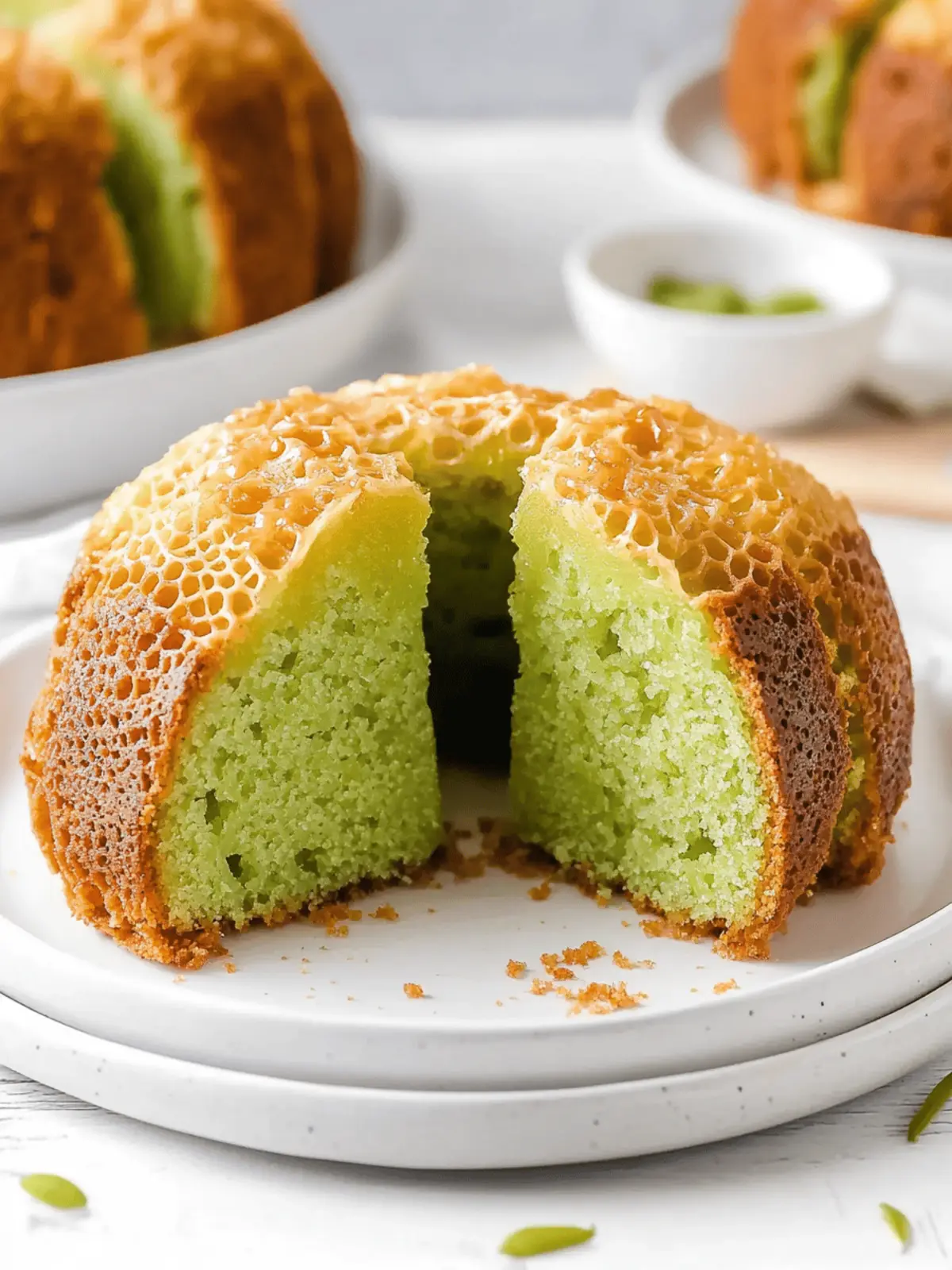
Delicious Vietnamese Honeycomb Cake: Chewy and Irresistible!
Ingredients
Equipment
Method
- Preheat the oven to 350°F (176°C) and warm your bundt pan for 15 minutes.
- Prepare the pandan puree by blending water with cleaned pandan leaves and strain to obtain 100 ml of fragrant liquid.
- Combine the wet ingredients: mix the pandan puree, coconut milk, heavy cream, pandan extract, sugar, and salt.
- Strain the eggs over the mixture, adding them gently to minimize air bubbles.
- Sift the tapioca flour, rice flour, and baking powder together; mix with the wet mixture until well incorporated.
- Strain the combined batter again to remove any clumps.
- Mix in the coconut oil gently and let the batter rest for about 5 minutes.
- Grease only the bottom of the bundt pan lightly; pour in the batter and bake for 45-50 minutes.
- Cool the cake in the oven with the door cracked open for 15 minutes before transferring to a wire rack.

